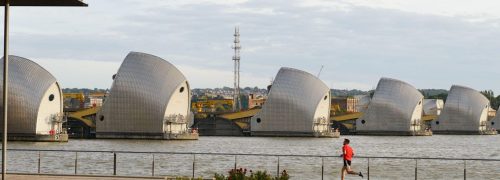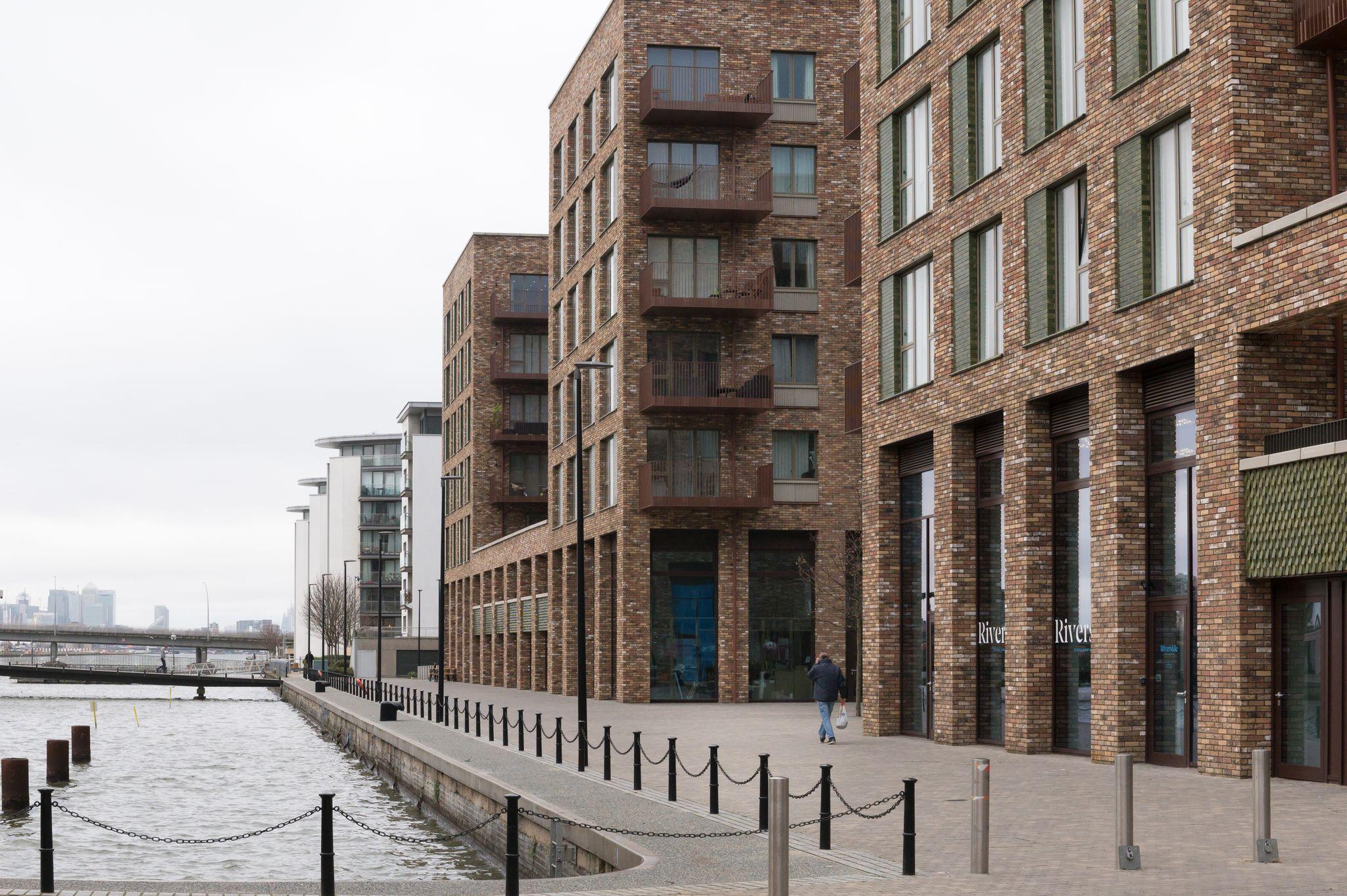
The Place Developments
With 1,200 acres of land, 250 acres of water and nearly 12 miles of waterfront, connectivity and infrastructure play a major role in providing access across London’s most exciting regeneration project.
The Royal Docks was once London’s busiest ports. Remnants of the area’s industrial heritage can still be found in the area today, with dockside cranes and old heritage buildings, contributing to the landscape’s character.
As London’s only Enterprise Zone (EZ) and with the Mayor of London a major landowner, the Royal Docks today, is the focus of much of London’s growth. Thousands of new homes, jobs, workspaces and other social amenities are already under construction across several major development sites.
Enhancing the Royal Docks’ public realm and ensuring that new developments are effectively integrated into the area’s existing communities, is a key priority for the Royal Docks Team. Equally important is ensuring that routes to and through the Royal Docks, including open and public spaces, are accessible, safe and welcoming to all.
“A key priority for the Royal Docks Enterprise Zone is to unlock the physical capacity and potential of the Royal Dock’s places, embedding principles of quality, sustainability and well-being within the built environment”.
The Royal Docks EZ Development and Placemaking Team oversees and delivers a broad programme of work, that can be categorised into 5 key areas: housing development, workspace, public realm works, transport, utilities and infrastructure and the water.
1. Housing development
Across the GLA’s land in the Royal Docks, the team is working with a range of landowners and development partners to build 25,000 new homes within the next 20 years. These homes are being built across a number of different development sites, which are all at different stages:
2. Workspace development
Approximately 40,000 jobs are set to be delivered within the Royal Docks Enterprise Zone, with 3 strategically important development sites, expected to deliver the majority of these. A number of sites outside the EZ also include new business space, helping to realise the Royal Docks’ role as a major new economic centre for London.

3. Public Realm Works Programme
In February 2019, the Royal Docks Team appointed a design team to work with stakeholders and the local community to produce a comprehensive Public Realm Framework for the Royal Docks. The framework sets out the overarching narrative and design personality for the Royal Docks’ open spaces, supporting the delivery of a coherent design character for the area and its connections to wider Newham and London, overcoming physical and perceived barriers. The Public Realm Framework identifies distinctive places around the Royal Docks, which are characterised for investment and improvement. These places have a particular economic or cultural offer operating at global, national and local levels. Over the past 2 years the Royal Docks Team has also delivered a number of public realm improvements and works to support developments, including:
- Royal Albert Dock waterfront – repair/reopen dock edge to reconnect east and west parts of the dock;
- Thames Barrier Park – café refurbishment and community consultation re future park improvements
- Crystal Gardens – replanting and turfing the area around the Crystal building
- The Lawns – reprofiling and replanting the area east of Building 1000/LB Newham HQ
4. Transport, Utilities & Infrastructure
With 1,200 acres of land, 250 acres of water and nearly 12 miles of waterfront, connectivity and infrastructure play a major role in providing access across London’s most exciting regeneration project.
Some of the work we are doing to develop and support robust connectivity and infrastructure includes working in partnership with colleagues from organisations such as TfL, UK Power Networks and Ofgem.
- DLR station upgrades
As a consequence of the anticipated growth across the Royal Docks, improvements are likely to be required to the DLR stations to accommodate additional passengers. The Royal Docks Team is working with TfL to identify priorities for improvement and to develop suitable schemes for upgrade.
- New electricity infrastructure
The Royal Docks has been granted £25m of Enterprise Zone funding to secure additional power capacity for the Royal Docks. Expected to be delivered by 2025, this will be vital to support the delivery of 25,000 new homes and 60,000 jobs in the area over the next 20 years. The team is working with UK Power Networks to deliver a new primary substation near Gallions Reach DLR station and upstream reinforcement works. The design and delivery of the primary substation will align with the vision and objectives of the Royal Docks and consultation on the design of the building, prior to a planning application, will begin in 2021.
- Riverside Strategy
Climate change, ageing flood defences and population growth mean tidal flood risk will increase over time, and we need to plan and act if we are to adapt to these changes and create resilient communities in the Thames Estuary, including the Royal Docks. The Environment Agency has published the Thames Estuary 2100 Plan to address these issues through the management of the risk of flooding, whilst protecting the social, cultural and commercial value of the Thames and enhancing and restoring ecosystems. To ensure that these aims are delivered in the Royal Docks, we are working with key stakeholders - including the Environment Agency, the GLA and the London Borough of Newham - to deliver a Riverside Strategy for the Royal Docks and Beckton Riverside. This will comprehensively address the approach to raised flood defences and their future maintenance in the area as well as considering matters such as the interaction between the public realm and access to the river, the incorporation of biodiversity and green space and the maintenance and enhancement of protected views.
- Integrated Water Management Strategy
The significant anticipated development of the Royal Docks and the associated population growth requires us all to consider the impact and need to improve wastewater networks, drainage and water supply as well as ensure that flood risk is managed and the quality of the significant water features in the area are protected. Considering these issues in isolation often overlooks the potential for solutions to provide multiple benefits in the most efficient and effective way. To address this, the Royal Docks Team is working to deliver an integrated approach to water management that will manage the whole water life cycle in the area in a sustainable way. The resulting Integrated Water Management Strategy will provide a strategic framework for guiding delivery of water services infrastructure and development, including measures to reduce demand, make use of water that is considered as waste, reduce flood risk and increase capacity of waste water infrastructure where needed. The Strategy will act as a tool to guide the delivery of development and the delivery of infrastructure across the Royal Docks. The Royal Docks Team is working with the Environment Agency, Thames Water, RoDMA and the London Borough of Newham on this document.
- Digital Strategy
The Royal Docks Enterprise Zone needs to provide the best possible digital connectivity to attract and retain business and provide for the needs of residents. The redevelopment of sites across the Royal Docks will increase the demand for digital services and this will require significant improvement to the current infrastructure and coverage. The Royal Docks Team has funded and published a Digital Strategy for the Royal Docks that sets out a number of recommendations to support the delivery of digital infrastructure, primarily focus on the delivery of fibre connectivity, mobile infrastructure and an internet of things. The Royal Docks Team is collaborating with stakeholders, including the London Borough of Newham and industry partners, to drive forward delivery.
Key Decisions
- DD2273 – Fees for the project management of public realm and enabling works.
- DD2297 – Fees for the Public Realm Framework, electricity project work, digital strategy, workspace fees, DLR design fees and North Woolwich Road fees.
- DD2312 – Capital funding for public realm and enabling works.
- DD2464 – Further capital funding for public realm and enabling works and further fees
- DD2491 – Fees to implement the Digital Strategy
- MD2655 – Electricity Reinforcement investment